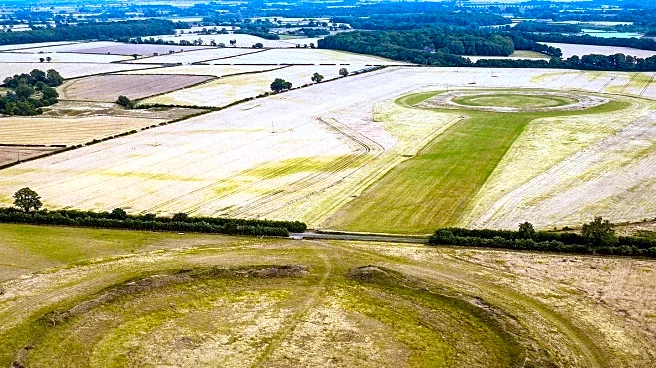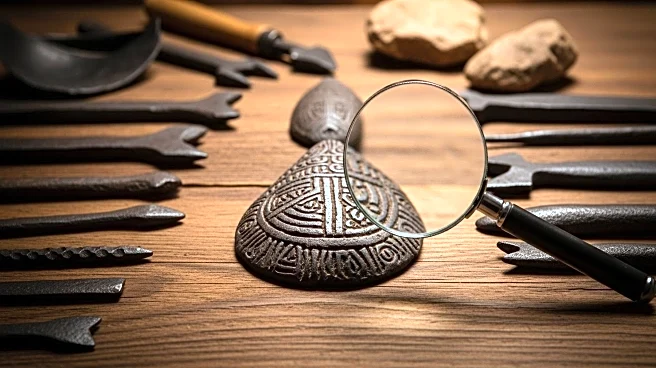What's Happening?
Archaeologists have uncovered four monumental earthwork circles in Burgenland, Austria, dating back to the Middle Neolithic period, predating Stonehenge by 2,000 years. These structures, known as Kreisgrabenanlagen, are believed to have served as gathering places for rituals and astronomical observations. The discovery is part of an ongoing excavation project that has also identified two Neolithic settlements. The site is being developed into an archaeological park, offering insights into the Neolithic lifestyle and technological advancements.
Why It's Important?
The discovery of the earthwork circles provides valuable information about the Neolithic period in Central Europe. It highlights the region's role as a hub for early agricultural and technological development. The find contributes to the understanding of prehistoric human activities and social structures. The archaeological park aims to educate the public about the significance of these ancient structures and their impact on human history.
What's Next?
Excavations will continue through the end of September, with soil samples from the earthwork circles sent to the University of Vienna for analysis. The development of the archaeological park will enhance public access to the site and promote further research. The findings may lead to new interpretations of Neolithic culture and its influence on subsequent historical developments.
Beyond the Headlines
The discovery challenges previous assumptions about the timeline of human development and the origins of complex social structures. It offers a new perspective on the technological and cultural advancements of Neolithic societies. The find underscores the importance of archaeological research in uncovering hidden aspects of history.










